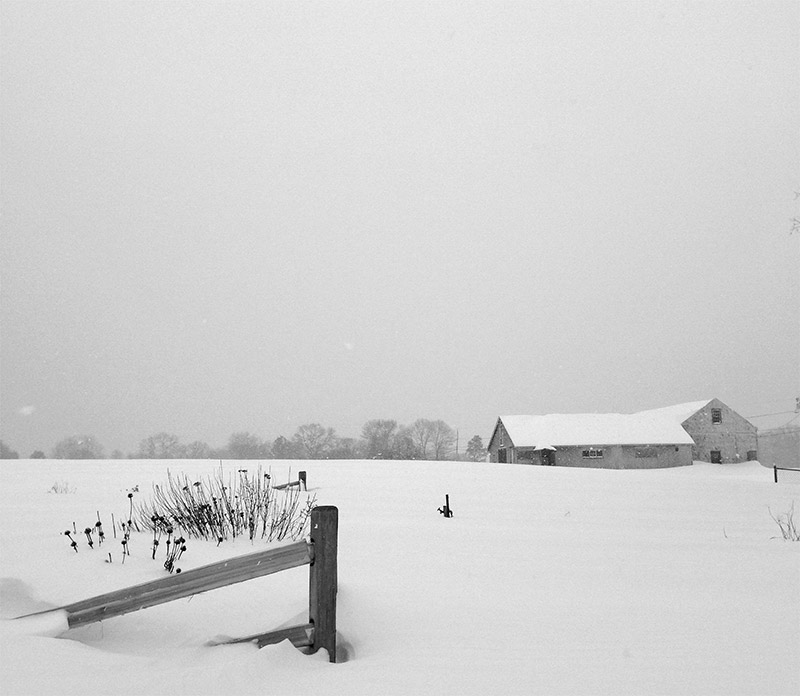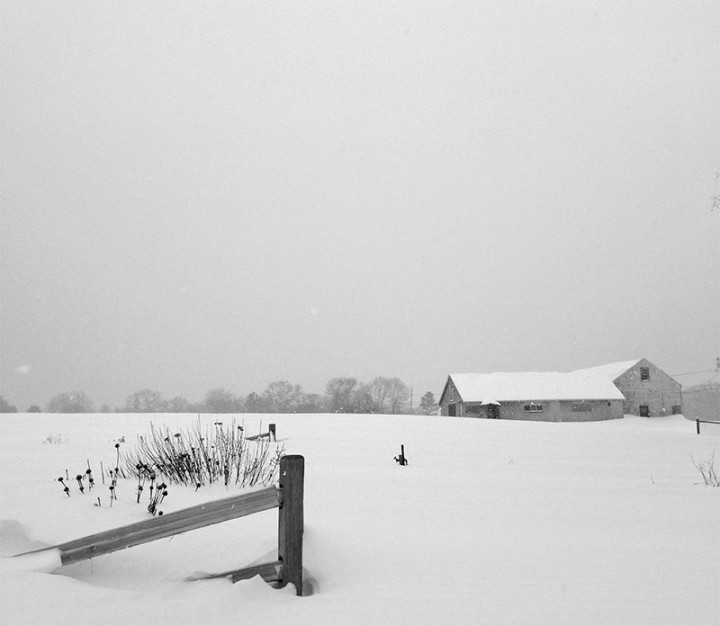New England Snow Farm
Here in northern Rhode Island, where snow is creeping above the three-foot mark, there is a snow farm. It is the same farm that grows vegetables and supersized sunflowers in the warmer months. The snow on this farm—Franklin Farm to the locals—stretches for many acres, and while an old country road may cut the two parcels that […]

Franklin Farm in Rhode Island.
Photo Credit : Jayne Guertin
Photo Credit : Jayne Guertin
Here in northern Rhode Island, where snow is creeping above the three-foot mark, there is a snow farm. It is the same farm that grows vegetables and supersized sunflowers in the warmer months. The snow on this farm—Franklin Farm to the locals—stretches for many acres, and while an old country road may cut the two parcels that make up the whole of it in half, the farm’s terrain appears, on this cold February day, to be a seamless swath of flocky whiteness. Not a trace of deer or rabbit or other types of tracks or footprint across its frosty, serene cover. A magical snow farm.
Snow piles high everywhere throughout New England, and one of the largest piles of all can be found in South Boston on another, less magical, snow farm. Not that we would want to find it. (And would it want to be found?) It is a dreary mess: heaps of ashen, unwanted snow behind a chain-link fence; the smell of gas and the painful noise of hydraulics—dump trucks and backhoes scraping the paved lot, adding to 40-foot-high piles of mush, pushing the great white mass against the fence.
“This snow just keeps on coming and it’s a problem,” says Boston’s Mayor Marty Walsh. But his remark seems too bitter to me, too ironic. (Of course, roadways can be treacherous, and many people may need food and shelter, and Mayor Walsh has these worries on his mind, but the problem is much deeper than snow—although I won’t bluster on here.)
I am greedy. I want more. (Easy for me to say, I know, I have food and shelter.) We are New Englanders for heaven’s sake. We live here so that we may embrace each glorious season, not think any one of them a trouble. Look, this wintry precipitation is an opportunity to either stay in and bake cookies, or simmer a soup, or catch up on email backlog. And the interwebs, being what they are, make it easy for many of us to work from home. Even the kids get sent homework, electronically, on snow days. Much better, though, a snow day is an opportunity to go out in the powder, to fall backside into it, flap your arms and legs and make a snow angel. (Sure to cure the most wretched soul.)
At the snow farm, a few blocks from where I live, my skis cut into a fresh crop of flakes, carving the first lines across the snow field, and I sink a half foot below the soft surface, yet still far above the frozen ground as I glide through the sloping field. I stop, here and there, to photograph my surroundings, and to think about this wondrous and generous offering, like hope from the heavens, emphasizing the importance of slowing down, considering the changing seasons, the glittery tableau before us, and what is soon to follow.
No matter the problem—and there is always a problem—the seasons will change, will offer their best, and yes, their worst. Again and again. Intimating, always, the shifting tides of land and sea and life. To live in New England is to know this, to know its various iterations, transformations, climates and colors, to know a certain peace in each mountain and river and the dangers of the same, and yes, to know its snow farms in all their gorgeous and gritty forms, and still, to be greedy for more.


